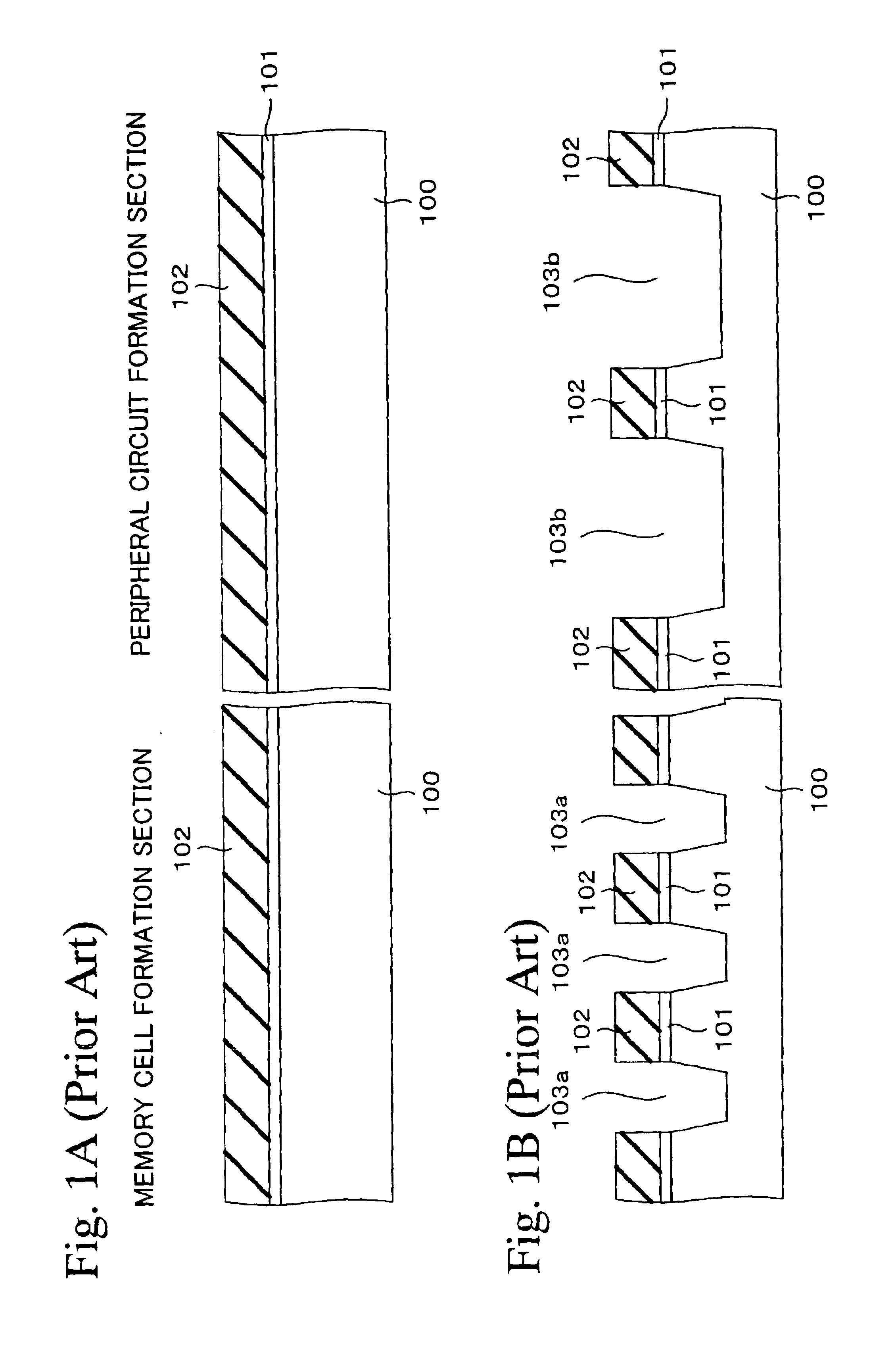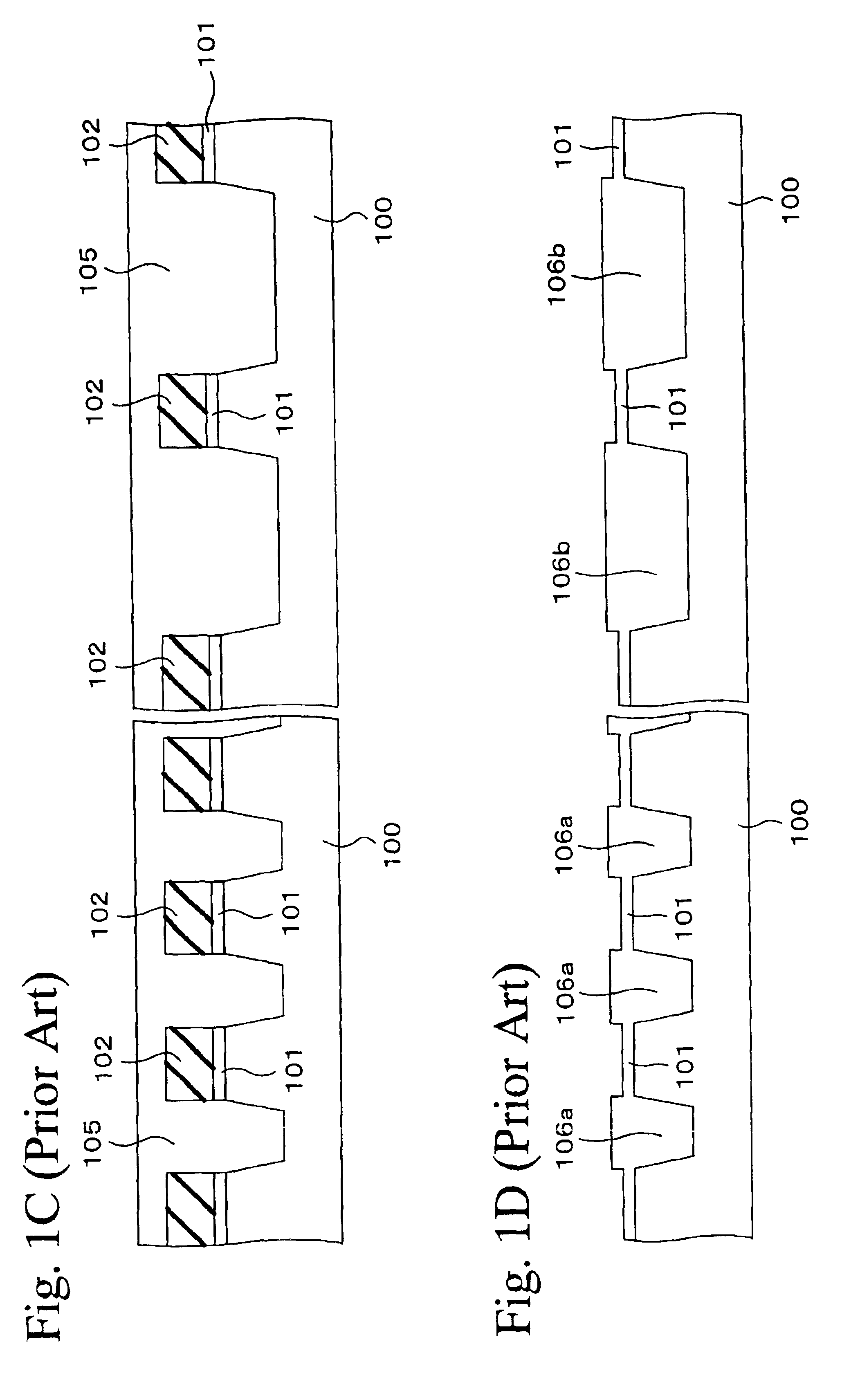Semiconductor device and method of fabricating the same
- Summary
- Abstract
- Description
- Claims
- Application Information
AI Technical Summary
Benefits of technology
Problems solved by technology
Method used
Image
Examples
first embodiment
FIGS. 3A to 3I are sectional views showing a fabrication method of a semiconductor device in a first embodiment of the present invention in the order of steps. Incidentally, this embodiment shows an example in which the invention is applied to the fabrication of a flash memory (EEPROM) having a memory cell and a peripheral circuit to drive the memory cell. In FIGS. 3A to 3I, the cross section of a memory-cell formation section is shown in the left-hand part of each view and the cross section of a peripheral-circuit formation section is shown in the right-hand part.
First, as shown in FIG. 3A, a pad oxide film 11 is formed on a semiconductor substrate 10 by the thermal oxidation process, for example, and a silicon nitride film 12 is formed on the pad oxide 11 film by the CVD process. Incidentally, a film of laminated structure of a silicon oxide layer and a silicon nitride layer may be formed in place of the silicon nitride film 12.
Next, as shown in FIG. 3B, by etching the silicon nit...
second embodiment
FIGS. 5A to 5I are sectional views showing a fabrication method of a semiconductor device (a flash memory) in a second embodiment of the present invention in the order of steps. In these FIGS. 5A to 5I, the section of a memory-cell formation section is shown in the left-hand part of each view and the section of a peripheral-circuit formation section is shown in the right-hand part.
First, as shown in FIG. 5A, a pad oxide film 21 is formed on a semiconductor substrate 10 by, for example, the thermal oxidation process. And the memory-cell formation section is covered with a resist film (not shown) and, as shown in FIG. 5B, the pad oxide film 21 of the peripheral-circuit formation section is removed.
Next, as shown in FIG. 5C, by performing again the thermal oxidation of the surface of the semiconductor substrate 10, a pad oxide film 22a is formed in the memory-cell formation section and a pad oxide film 22b is formed in the peripheral-circuit formation section.
Next, as shown in FIG. 5D,...
third embodiment
FIGS. 6A to 6G are sectional views showing a fabrication method of a semiconductor device (a flash memory) in a third embodiment of the present invention in the order of steps. In these FIGS. 6A to 6G, the section of a memory-cell formation section is shown in the left-hand part of each view and the section of a peripheral-circuit formation section is shown in the right-hand part.
First, as shown in FIG. 6A, a pad oxide film 31 is formed on a semiconductor substrate 10 by, for example, the thermal oxidation process, and a silicon nitride film 32 is formed on the pad oxide film 31 by the CVD process. A film of laminated structure of a silicon oxide layer and a silicon nitride layer may be formed in place of the silicon nitride film 32.
Next, as shown in FIG. 6B, a resist film 33 having an opening in a part corresponding to the element-isolating region of the memory-cell formation section is formed on a silicon nitride film 32. And after the sequential etching of the silicon nitride fil...
PUM
 Login to View More
Login to View More Abstract
Description
Claims
Application Information
 Login to View More
Login to View More - R&D
- Intellectual Property
- Life Sciences
- Materials
- Tech Scout
- Unparalleled Data Quality
- Higher Quality Content
- 60% Fewer Hallucinations
Browse by: Latest US Patents, China's latest patents, Technical Efficacy Thesaurus, Application Domain, Technology Topic, Popular Technical Reports.
© 2025 PatSnap. All rights reserved.Legal|Privacy policy|Modern Slavery Act Transparency Statement|Sitemap|About US| Contact US: help@patsnap.com



